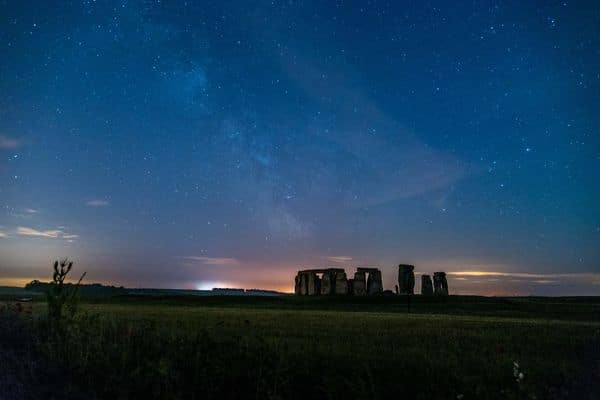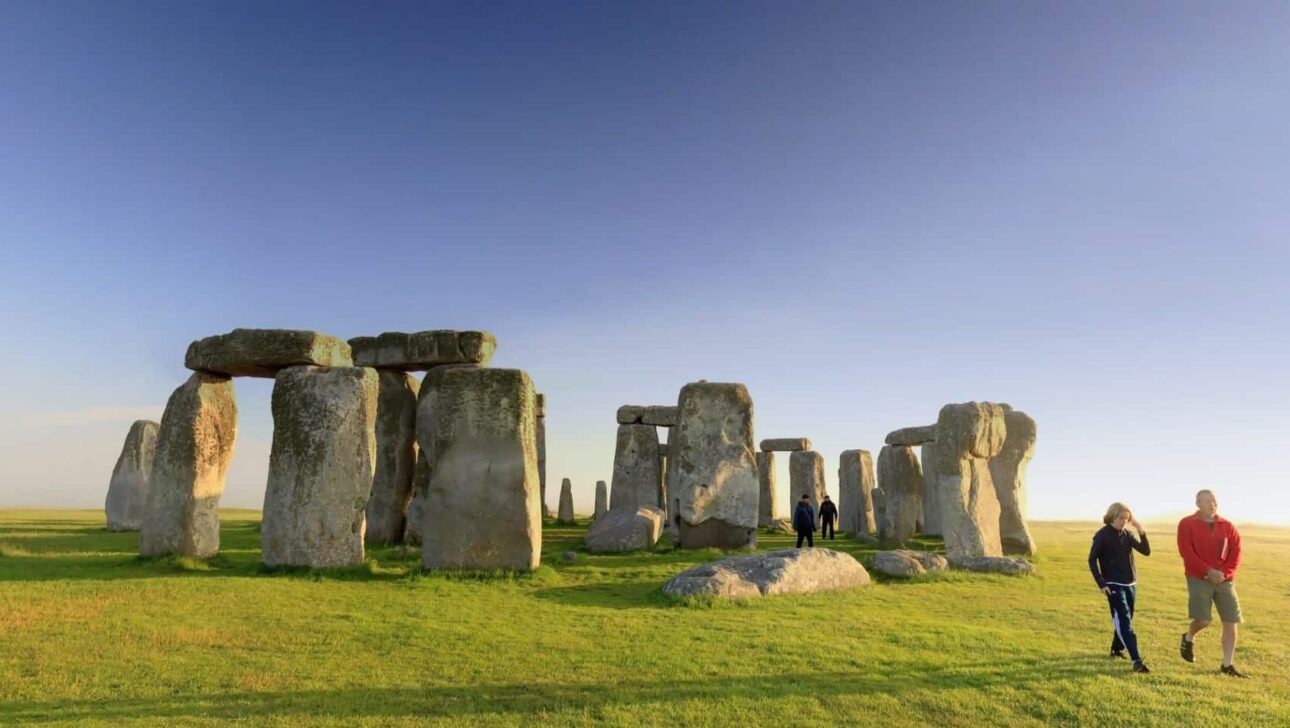Rising up from Salisbury Plain, Stonehenge remains one of the world’s most popular – and mysterious – tourist attractions. Poets and philosophers, and those who simply want to see it for themselves, have visited the site for some 5,000 years.
When you join us on a Classic Journeys pilgrimage to the ethereal site, you may have the magical experience of seeing Stonehenge steaming at dawn. We’re there alone, with no crowds and with no ropes to hold us back. We feel the sun on our faces at the same time it starts to warm the night-cooled sandstone.
One of the best-known ancient wonders of the world, Stonehenge lies atop many travelers’ bucket lists when exploring the United Kingdom. Whether you’re already booked on our upcoming Cotswolds & Stonehenge Cultural Walking Tour or are considering it, read on for a brief history lesson about this spectacular stone circle.
The History of Stonehenge
What Is Stonehenge?
Built in several stages, starting around 5,000 years ago, the iconic stone circle we are used to seeing in photographs is believed to have been erected in the late Neolithic period (more on this later). There are burial mounds nearby, built in the early Bronze Age. Stonehenge and nearby Avebury together form a UNESCO World Heritage Site of distinctive prehistoric monuments.
Whether built by giants, wizards, gods, or even the devil, no one quite knows how Stonehenge came to exist. Read on for some of the many theories that have been put forward regarding its construction. One fact that is known is that the massive inner ring stones, which weigh 4 tons each, came from the Preseli Mountains in Wales (some 250 miles away!). So there was considerable effort involved in its creation, no matter how it came to be.
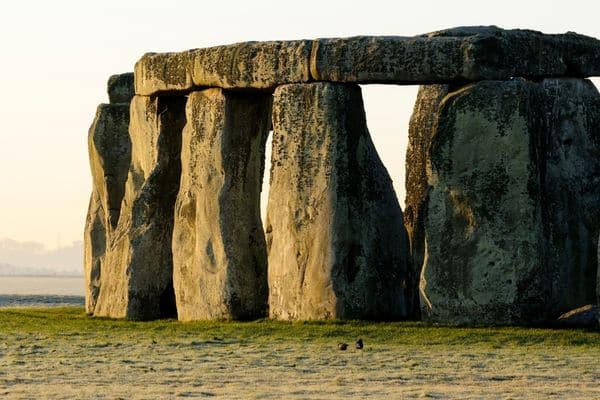
Who Built Stonehenge?
Theories abound when it comes to who built Stonehenge. Folklore tells us that it was created by Merlin of Arthurian legend, who, as the story goes, magically transported the stones from Ireland, where they were assembled into their current shape by giants.
Another tale tells us the stones were erected by the invading Danes, while another postulates that they’re the ruins of a Roman temple. Even today, tall tales exist, including one that suggests Stonehenge is an alien spacecraft landing area. Scientifically speaking, archaeological evidence points to early Mesolithic hunger-gatherers with Stonehenge builders coming from England, Wales, and the Mediterranean.
When Was Stonehenge Built?
Archaeologists have determined that the first phase of Stonehenge’s building was around 5000 BC, when the outer circular bank and ditch were formed. It wasn’t until a thousand years later that the inner circle of granite stones, or bluestones, was added to the site. Remember, for a moment, that these early Britons had only the simplest of tools to work with, which likely involved ropes, sledges, and wooden rollers crafted from the trees that covered Salisbury Plain at the time.
The main stones you see at Stonehenge were brought there around 2500 BC and topped with lintels to make the trilithons (two vertical stones crowned by a top horizontal one). These rocks (50 tons each) came from Marlborough Downs, just 20 miles from the site. Here’s a fun fact: It’s believed that to drag one such stone across the countryside to arrive at Stonehenge would require no less than 600 people!)
The building didn’t stop then. At about the same time as the Marlborough Downs rocks came into the picture, the bluestones from earlier were rearranged as an inner horseshoe with a center altar stone. Next, what is known as the Sarsen Circle – 30 monolithic vertical stones – was added. Today, 17 upright stones and six lintel pieces remain at Stonehenge.
It was John Aubrey who came along in the 1600s and discovered another circle marked by 58 holes in the ground (later named the Aubrey Holes). Inside that are the South and North Barrows, with inner horseshoes that are aligned to coincide with the sunrise at midsummer solstice.
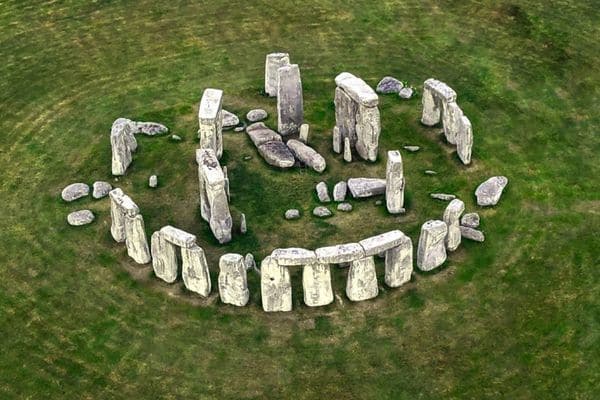
Where Is Stonehenge?
Undoubtedly one of the world’s most famous prehistoric monuments, Stonehenge is located on the Salisbury Plane in Wiltshire, England, just a couple miles west of Amesbury. Nearby, the Village of Avebury offers more insight into Neolithic times, with its man-made mounds, burial chambers, earthworks, and stone circle of its own.
Why Was Stonehenge Built?
As to the site’s purpose, theories abound, from the legendary and far-fetched to the scientifically reasonable. Possibilities range from a sacrificial center to a celestial timepiece. In recent years, more evidence has arisen that suggests the area that surrounds Stonehenge was sacred for centuries before the construction even began.
While there is no shortage of theories, they are not necessarily mutually exclusive. Some of those bandied about over the years suggest that:

Stonehenge was a burial site.
British researchers have re-exhumed more than 50,000 created bone fragments that represent 63 individuals. According to a study completed by the University College London Institute of Archaeology, these burials would have occurred in 3000 BC and the first stones were brought from Wales at that time to mark the graves.
Stonehenge was a place of healing.
In 2008, researchers Geoggrey Wainwrights and Timothy Darvill reported that many of the recovered skeletons from Stonehenge and its surroundings showed evidence of illness or injury. They also discovered that fragments of the Stonehenge bluestones had been chipped away, possibly to be used as healing talismans.
Stonehenge was a soundscape.
Haven’t heard of archaeoacoustics? It’s a thing, and Steven Waller is one of them. He reported in 2012 that Stonehenge’s circular construction may have been created to mimic a sound illusion. He suggests that pipers (which have been referenced in Stonehenge legends) could both play their instruments on the field and the sound waves would cancel each other out and create quiet spots. Whether that’s true or not, another study confirmed that Stonehenge has acoustics on par with a modern-day concert hall.
Stonehenge was a celestial observatory.
Summer and winter solstices continue to be celebrated at Stonehenge even today, whether or not this is why the megalithic circle was built. The monument aligns with the sun on the winter solstice and there is archaeological evidence of celebrations and rituals around that time of the year.
Stonehenge was the ultimate team-builder.
Forget ropes courses and trust falls. Perhaps Stonehenge was an ancient team-building activity. Researchers at University College London suggest that the timing of the site’s initial construction coincides with increasing unity amongst Britain’s Neolithic people. Could the massive undertaking and the collaborative labor it required have been the ultimate act of unification?
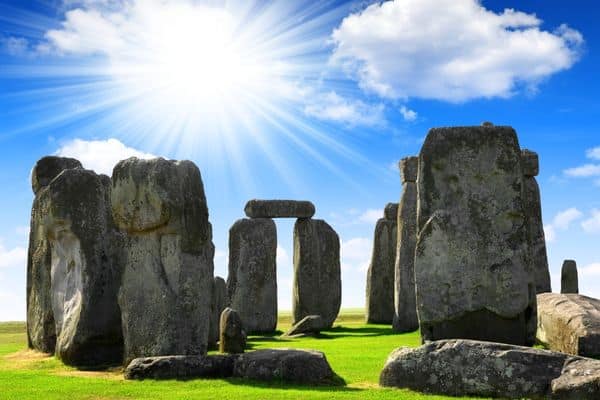
How Can I Visit Stonehenge?
Exclusive Access with Classic Journeys
Why experience Stonehenge on the surface when you can get closer with Classic Journeys? What’s more, our private tours allow us to visit in the early morning, when the crowds haven’t arrived, and when the stunning peace and quiet of the site lends itself to deeper introspection about its existence.
Our “Only with Classic Journeys” experience gives you special access when the site is completely closed to the public. After your up-close visit, you can share your impressions (and your own theories about its origins) with like-minded travelers.
Are you ready to see Stonehenge for yourself? Start planning your trip of a lifetime by contacting our Travel Experience Team.
